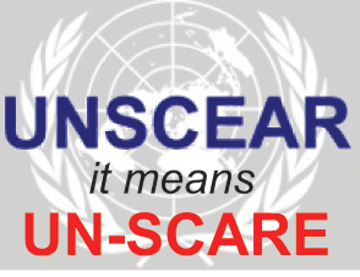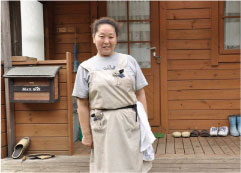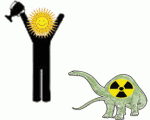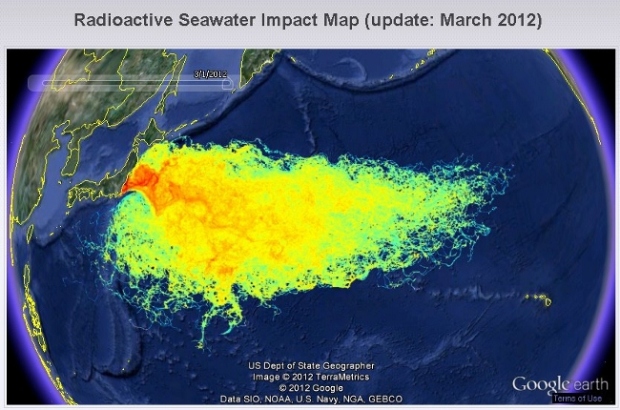(Re-blogged from
The article is published online on The Asia Pacific Journal: Japan focus
http://www.japanfocus.org/events/view/184
Thierry Ribault Researcher at CNRS
June 10, 2013
…..The Japanese government is revising history. It has
been helped in this task by the French president, seven high-level
ministers, and other Parliament members and industrial representatives
during the state visit to Japan from 6 to 8 of June. The delivery of the
10 tons of MOX fuel which left La Hague on April 17, will also help the Japanese government to reopen nuclear power plants……
….At the same conference in Geneva at which Grover’s report was released, the Japanese government presented a counter report dated
May 27, that dismisses Grover’s conclusions. According to Japanese
authorities the “scientific basis” of Grover’s report is totally
lacking. The “scientific basis” that the Japanese government relies on
instead is the basis provided by WHO, UNSCEAR, ICRP and IAEA experts….
….“Intervention trials should be done scientifically and ethically.
Why is blood testing or urine testing required? Because of the
possibility of what type of disorder is such testing justified? The idea
is unacceptable because, we should not unnecessarily burden the local
citizens by forcing medically unjustified examinations on them.”…..
On May 27, Anand Grover, Special Rapporteur to the United Nations
Human Rights Council, released a report on his November 2012 mission to
Fukushima. The UN Council did their job – to protect – or at least
clearly expressed their intention to do so. This article outlines the
main conclusions of Grover’s sharply critical report which is available
for download here. In his report, Grover describes the extent of the
disaster:
“The amount of radioactive cesium (137C) released due to the nuclear
accident at the Fukushima Daiichi Plant is estimated to be 168 times
higher than that released by the atomic bomb in Hiroshima. According to
TEPCO, the accident released 900 petabecquerel of radioactive iodine and
cesium…. Other radioactive materials released due to the nuclear
accident include radioactive Tellurium (129mTe, 129Te), Silver (110mAg),
Lanthanum (140La) and Barium (140Ba).”
The Rapporteur also argues strongly that the old methods of masking
the stark reality of radiation exposure used by Soviet authorities after
Chernobyl should no longer be acceptable. In the years since Chernobyl,
we have learned much more about health damage due to radiation exposure
including chromosomal aberrations, increased childhood and adult
morbidity, impairment and leukemia. According to Grover, the scientific
record demonstrating the link between long term exposure and radiation
at low doses and the development of cancers can no longer be dismissed
as insignificant. [For more information on the controversy concerning
Chernobyl studies and the gaps in scientific knowledge about the health
effects of radiation, see Matthew Penney and Mark Selden,
What Price the Fukushima Meltdown? Comparing Chernobyl and Fukushima]
In the Japanese case, Grover criticizes the lack of effective
distribution of stable iodine tablets to the population. He also
questions the health protection system for nuclear workers: access to
medical examination is not systematic (contrary to law) and the results
of the examinations which are carried out are not adequately transmitted
to the authorities. Finally, the labour force employed by
subcontractors, a large majority of those working at Fukushima Daiichi,
does not have a guarantee of access to such screenings. [For more
information on the problems faced by workers at the Fukushima Daiichi
site, see Gabrielle Hecht,
Nuclear Janitors: Contract Workers at the Fukushima Reactors and Beyond] .
Concerning the zoning system around the nuclear plant, Grover reminds
us of the unacceptability threshold decided for Chernobyl in 1991: any
higher than 1 mSv per year and the population was not allowed to return
and live and work in contaminated areas. In Fukushima this threshold has
been set at the level of 20 mSv per year. In areas with radiation
measured at rates between 20 and 50 mSv, the population can freely
access the contaminated areas during the day.
T
he Rapporteur criticizes the use of “cost-benefit analysis”
made by the Japanese authorities (following the ICRP recommendations)
since such analysis does not respect the fundamental right to health of
individuals. Grover argues that “collective interests” should
never dominate individual rights, notably the right to health. Thus, he
calls on the Japanese government to lower the threshold of exposure
under which individuals are allowed to return to contaminated areas, and
urges that displaced people receive compensation and free health
protection in areas exceeding 1 msv per year.
On the matter of education about radiation, Grover asks the Japanese
government to stop all claims in a supplementary reader provided to
schools that radiation exposure below 100 mSv per year is not harmful to
a person’s health. [For details on the 100 mSv claim in the classroom,
see coverage in
Kinyobi.
About decontamination, the Rapporteur expresses regret that
no clear schedule to bring to contamination levels under 1 mSv has been
set by the authorities beyond 2013. To clean school yards is
not enough and Grover argues that it is instead necessary to
decontaminate more broadly, taking into consideration the multiple
“hot-spots” existing in areas which average under 20 mSv. For some of
these zones, the population is now being called upon to return to their
homes and communities.
Finally, he criticizes the policy of
involvement of the population in decontamination operations without
providing them with proper equipment and informing them clearly of the
health consequences.
The Rapporteur also criticizes the financing by the state, which
means Japan’s taxpayers, of damages for which TEPCO is responsible: an
amount equivalent to 110 billion euros or approximately 145 billion USD,
announced at the end of 2012. [For more information on the financial
risks of nuclear power that are borne by taxpayers and not by the
companies and shareholders that stand to profit, see the Asia-Pacific
Journal Feature,
The Costs of Fukushima.
For the Japanese government, no “truth” except the views of WHO and UNSCEAR experts
At the same conference in Geneva at which Grover’s report was released, the Japanese government presented a
counter report dated
May 27, that dismisses Grover’s conclusions. According to Japanese
authorities the “scientific basis” of Grover’s report is totally
lacking. The “scientific basis” that the Japanese government relies on
instead is the basis provided by WHO, UNSCEAR, ICRP and IAEA experts.
Many scientists and nuclear critics disagree with these positions and
others argue that ties to the nuclear industry and the dual role of
assessing nuclear safety and promoting the use of nuclear power make the
conclusions put forward by these organizations questionable.

The truth made available by UNSCEAR’s experts is a convenient one for
the Japanese government: this UN agency in charge of estimating the
consequences of the Fukushima meltdowns, is the same one that concluded
that there were fewer than 50 immediate deaths due to radiation and
under 15 deaths linked to thyroid cancers after the Chernobyl disaster,
and is already anticipating “zero deaths” in the short as well as in the
long term in Fukushima. This
“anticipation” dates from March 2012 and was confirmed in their
recent report.
Grover’s call for better protection of the population is considered
by the Japanese government to be totally misplaced and redundant since
nothing “scientifically” proves that the concerned populations have a
real need to be protected beyond measures already being enforced: “The
Government will continue to work on measures so that suitable support
will be provided to the people who truly need it.”
When Grover recommended that the Japanese government “avoid limiting
health check-ups for children to thyroid checks and extend check-ups for
all possible health effects, including urine and blood tests”, the
answer provided by the Japanese government, which is now asking that
those passages be erased, is as follows:
“Intervention trials should be done scientifically
and ethically. Why is blood testing or urine testing required? Because
of the possibility of what type of disorder is such testing justified?
The idea is unacceptable because, we should not unnecessarily burden the
local citizens by forcing medically unjustified examinations on them.”
The 1 mSv per year threshold and “prejudgment” of health impacts
The Special Rapporteur recommended that the Japanese government: “…
provide funding for relocation, housing, employment, education and other
essential support needed by those who chose to evacuate, stay or return
to any area where radiation exceeds 1mSv/year.” The Japanese government
has responded with: “The sentences described above should be deleted
because they are based on prejudgment. As we have already noted, there
has been international controversy over the radiation level which
affects health and it is still under much consideration from various
perspectives.”
Concerning contaminated waste, Grover’s report notes: “As the
contaminated waste is stored in residential areas and under playgrounds,
thereby posing a health hazard to residents, establishing temporary
storage facilities away from residential areas is urgently required.”
The Japanese authorities do not hesitate to openly lie while replying
to this criticism: “When soil, etc. is stored, measures to prevent
human health impacts are taken such as radiation shielding. Therefore,
the description ‘posing a health hazard to residents’ is not the case.”
The Japanese government is revising history. It has been helped in
this task by the French president, seven high-level ministers, and other
Parliament members and industrial representatives during the state
visit to Japan from 6 to 8 of June. The delivery of the 10 tons of
MOX fuel which left La Hague on April 17, will also help the Japanese government to reopen nuclear power plants.
Thierry Ribault is co-author with Nadine Ribault of :
Les Sanctuaires de l’abîme – Chronique du désastre de Fukushima – published by Les Éditions de l’Encyclopédie des Nuisances, Paris, 2012. He is also co-editor, with Christine Lévy of:
Catastrophy and Humanism – An overview after the march 11 disaster 震災とヒューマニズム 3・11の破局をめぐって published by Akashi Shoten, Tokyo, 2013.
A French version of this article was published on the
RUE89 website.
http://www.save-children-from-radiation.org/2013/06/20/un-special-rapporteur-anand-grover-on-fukushima-a-stunning-report-brushed-aside-by-the-japanese-government/
other resources ;
Fukushima and the nuclear industry’s fight against fear, Independent Australia, 12 June 13, Now that the Fukushima meltdown has faded from public consciousness, says Noel Wauchope, the nuclear industry is trying to persuade the world there is nothing to fear from fission.“
http://nuclear-news.net/2013/06/12/unscears-skewed-message-about-fukushima-radiation/
Fukushima and the nuclear industry’s fight against fear, Noel Wauchope, Independent Australia, 12 June 13,“……..We
should also bear in mind the relationship between both the World Health
Organisation and UNSCEAR to the International Atomic Energy Agency.
The World Health Organisation is bound by an agreement with the IAEA.
A clause of this agreement says the WHO effectively grants the right of
prior approval over any research it might undertake or report on to the
IAEA
UNSCEAR
is also subservient to the IAEA. Every UNSCEAR report must be
specifically approved by the IAEA. UNSCEAR’s membership is largely from
the nuclear industry. Its chairman,
Wolfgang Weiss, is a boss on
Euratom which, according to Wikipedia, is
‘… an international organisation founded in
1958 with the purpose of creating a specialist market for nuclear power
in Europe, developing nuclear energy and distributing it to its member
states while selling the surplus to non-member states.’
The IAEA itself has as its founding brief:
‘The agency shall seek to accelerate and enlarge the
contribution of atomic energy to peace, health and prosperity through
the world.’……”
http://www.independentaustralia.net/2013/life/health/fukushima-and-the-nuclear-industrys-fight-against-fear/?utm_source=rss&utm_medium=rss&utm_campaign=fukushima-and-the-nuclear-industrys-fight-against-fear
Japanese Government give financial support to corporations in 20-50mSv/y areas in Fukushima prefecture
Japanese Government give financial
support to corporations in 20-50mSv/y in Fukushima prefecture
50msvの居住制限区域の企業に税制優遇で帰還を促す政府 15/5/13
http://nuclear-news.net/2013/06/20/japanese-government-give-financial-support-to-corporations-in-20-50msvy-areas-in-fukushima-prefecture/










